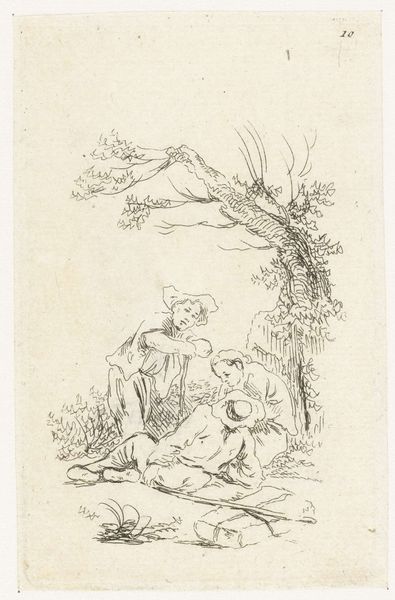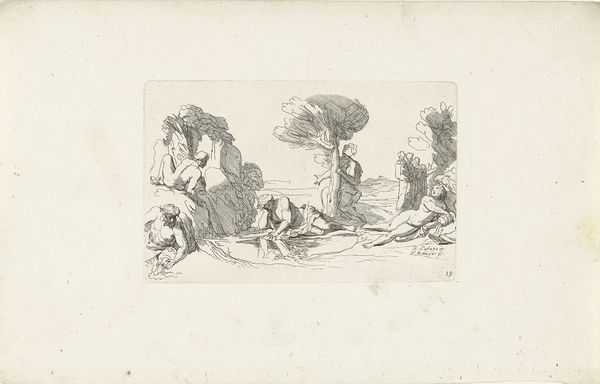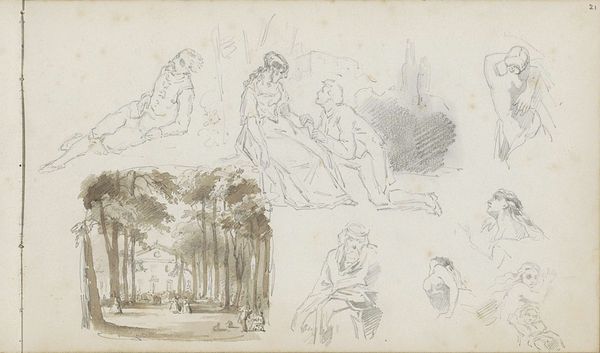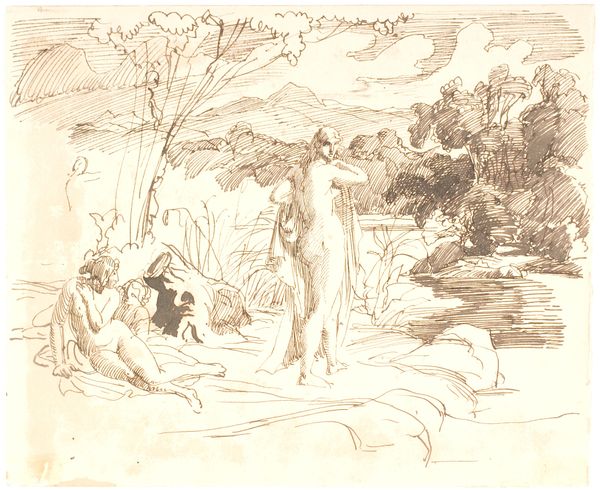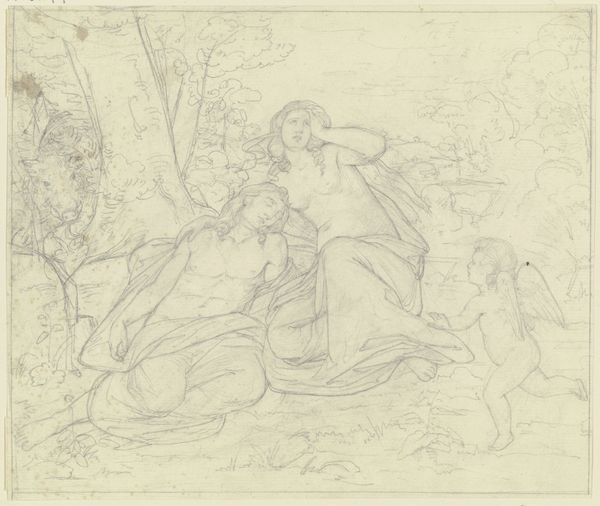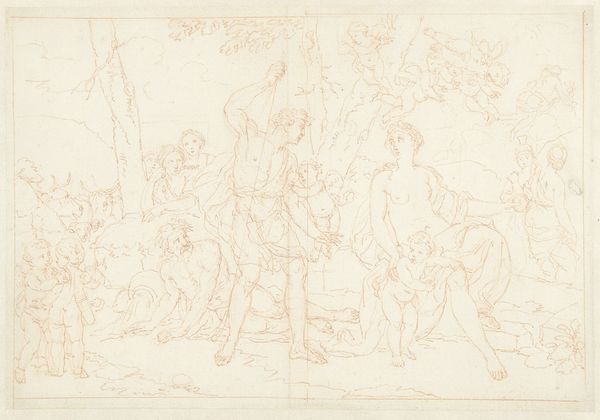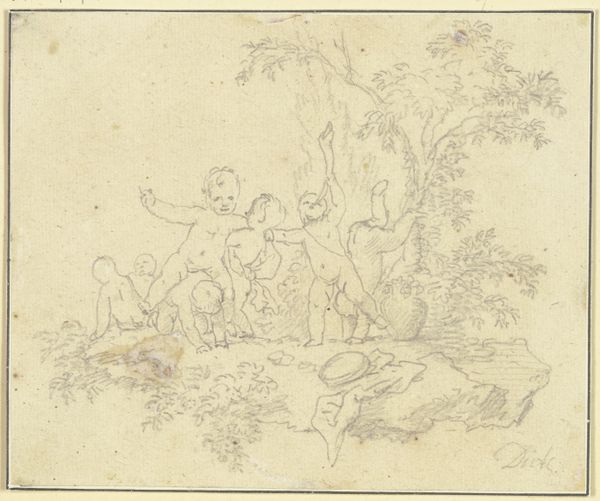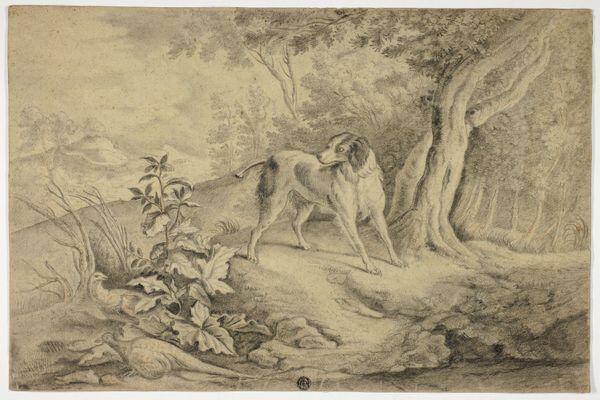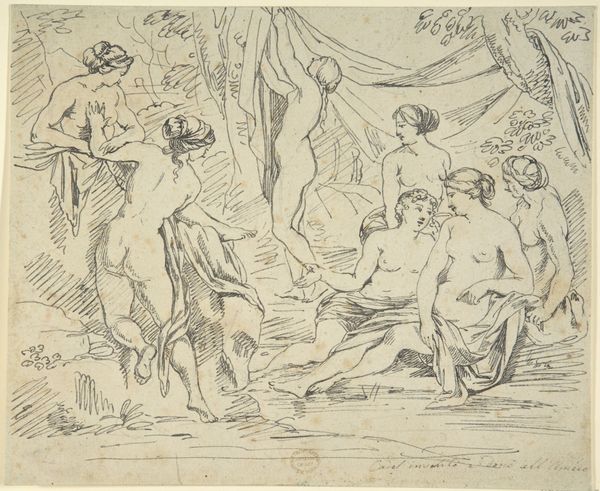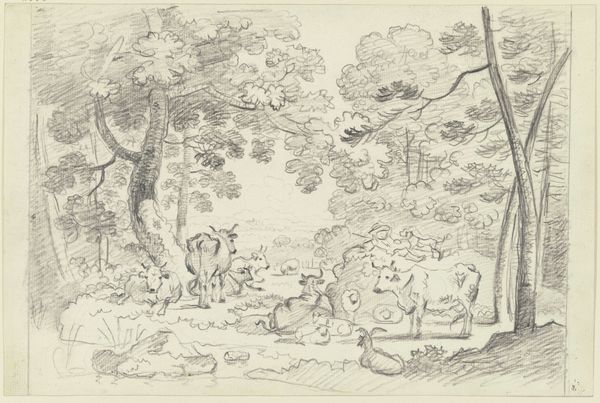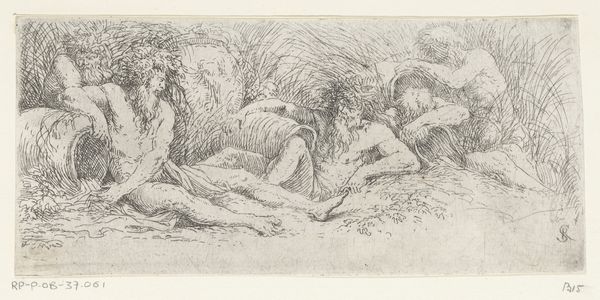
Dimensions: height 166 mm, width 252 mm
Copyright: Rijks Museum: Open Domain
Editor: This is "Mercurius en Argus," a pen and ink drawing done sometime between 1741 and 1803 by Cornelis Brouwer, housed here at the Rijksmuseum. The detail is just incredible for such a small piece! What immediately strikes me is the contrast between the human figures and the almost cartoonish rendering of the animals. What are your thoughts? Curator: The social function of this drawing intrigues me. Given Brouwer's position and the art market of the time, this likely wasn't conceived as a high art object for public display, but rather a demonstration of skill or perhaps even preparatory work for something larger. Why choose this mythological scene? Editor: Good point! I guess I assumed a classical story elevated the drawing, but you’re suggesting its purpose changes our perception. Is it less about the *narrative* and more about Brouwer’s capabilities as an artist? Curator: Precisely! Consider the Baroque style trending towards detailed naturalism, even within mythological subjects. The "academic art" tag points to the artist displaying his proficiency, almost as advertisement or practice. Does it successfully negotiate that line between artistry and mere demonstration, in your view? Editor: I can see your point. Knowing its social context as a display of technique certainly changes how I view it. The somewhat stiff poses of the figures, previously a distraction, now seem purposeful—demonstrating his skill in rendering the human form. Curator: It reveals much, doesn't it? Considering the artistic infrastructure and social milieu drastically alters our perception and valuation of a work like this. Editor: It absolutely does! I came in thinking "mythological landscape," but now I'm leaving thinking about Brouwer's place in the art world and how drawings like this might have helped him navigate it. Thanks!
Comments
No comments
Be the first to comment and join the conversation on the ultimate creative platform.
